 2021 Toyota Mirai II Dimensions, Size & Specs
2021 Toyota Mirai II Dimensions, Size & SpecsMeasurements of the 2021 Toyota Mirai II, engineered for optimal performance and comfort
| Dimensions | |
|---|---|
| Length: | 4975 mm195.9 in16.3 ft |
| Width: | 1885 mm74.2 in6.2 ft |
| Height: | 1480 mm58.3 in4.9 ft |
| Ground Clearance: | 150 mm5.9 in0.5 ft |
| Weight Specifications | |
| Curb Weight: | 1900 kg4189 lbs |
| Maximal permitted Weight: | 2415 kg5324 lbs |
| Tire Specifications | |
| Rims Sizes: | 19-inch rims:
|
| Tire Sizes: |
|
The 2021 Toyota Mirai II represents the second generation of Toyota’s pioneering hydrogen fuel cell sedan, produced from 2020 to the present. As a clean energy vehicle showcasing advanced hydrogen technology, the Mirai II blends futuristic design with practical dimensions. It measures a substantial 4975 mm (195.7 inches) in length, providing ample interior space and a commanding road presence. The car's width stands at 1885 mm (74.2 inches), contributing to its stability and road grip, while its height is relatively low at 1480 mm (58.3 inches), giving it a sleek and aerodynamic profile.
Weighing in at a curb weight of 1900 kg (4188 lbs), the Mirai II is relatively heavy, reflecting its advanced hydrogen fuel cell system and associated components. The vehicle’s maximum weight capacity is 2415 kg (5325 lbs), accommodating passengers and cargo efficiently without compromising performance. Ride height or ground clearance is 150 mm (5.9 inches), striking a balance suitable for urban and highway driving.
Wheel and tire options include 8.0J x 19 and 8.5J x 20 rim sizes, paired with 235/55 R19 and 245/45 R20 tire sizes respectively. These specifications offer a combination of comfort and performance tailored to the Mirai’s eco-friendly yet dynamic nature. The Mirai II’s size and design demonstrate Toyota’s commitment to creating a practical, spacious, and futuristic sedan that champions hydrogen technology as a viable zero-emission vehicle choice.
Discover the standout features that make the 2021 Toyota Mirai II a leader in its class
Have a question? Please check our knowledgebase first.
The Toyota Mirai II, launched in 2020 for the 2021 model year, measures 4975 mm (195.9 inches) in length, 1885 mm (74.2 inches) in width, and 1480 mm (58.3 inches) in height. These dimensions position the Mirai II as a sizeable sedan designed to provide spacious interior comfort while maintaining a sleek, aerodynamic look characteristic of hydrogen fuel cell vehicles. The length of nearly 5 meters ensures ample cabin and trunk space, and the width allows for generous shoulder room for passengers. Meanwhile, the relatively low height contributes to a sporty stance and improved aerodynamics for better efficiency.
The Toyota Mirai II has a curb weight of approximately 1900 kg (4189 lbs) and a maximum weight of 2415 kg (5325 lbs). These weight figures reflect the added mass from the vehicle's hydrogen fuel cell system, high-pressure hydrogen tanks, and associated components compared to conventional gasoline cars. While the weight is relatively high for a sedan, Toyota has engineered the Mirai II with a focus on weight distribution and chassis tuning to maintain dynamic handling. The fuel efficiency benefits of hydrogen fuel technology can offset concerns related to heavier weight, offering smooth, quiet driving with zero emissions. However, the energy density and weight of hydrogen components do influence overall mass, impacting acceleration and range characteristics relative to similarly sized traditional vehicles.
The Toyota Mirai II features a ground clearance of 150 mm (5.9 inches), which is standard for many sedans designed primarily for on-road driving. This moderate ride height strikes a balance between providing sufficient clearance to navigate common urban obstacles like speed bumps and mild road irregularities while maintaining a low center of gravity for improved stability and handling. Though it is not designed for off-road conditions, the ground clearance allows comfortable daily driving in city environments and on highways. However, drivers should exercise caution when encountering steep ramps, uneven terrain, or deep potholes as the low clearance limits rugged terrain capability.
The Toyota Mirai II comes equipped with rim sizes ranging from 8.0J x 19 inches to 8.5J x 20 inches, paired with tires sized 235/55 R19 and 245/45 R20 respectively. The 19-inch tires with a taller sidewall provide a slightly cushioned ride, absorbing minor road imperfections, while the lower profile 20-inch tires offer enhanced grip and sharper handling characteristics, contributing to a sportier driving experience. These wheel and tire combinations balance comfort, aesthetics, and performance needs for a large hydrogen fuel-cell sedan. The careful tire engineering also supports the Mirai’s stability and ride comfort while managing the additional weight imposed by the hydrogen system.
Yes, the Toyota Mirai II fits comfortably in a standard residential garage. With a length of 4975 mm (195.9 inches), a width of 1885 mm (74.2 inches), and a height of 1480 mm (58.3 inches), it falls within typical garage dimension allowances. Most single-car garages have a clearance length of approximately 5.5 meters (18 feet) and a width of at least 2.4 meters (7.9 feet), so the Mirai II's dimensions allow for adequate room around the vehicle for opening doors and maneuvering. It's important to consider additional space for items stored in the garage, but overall the Mirai II’s size is suitable for typical garage parking setups used in many households.
While specific interior volume figures for the Toyota Mirai II are not provided here, its large exterior dimensions, especially the extended length of nearly 5 meters, suggest ample cabin space for passengers and cargo. The 2021 Mirai II is designed as a high-tech hydrogen fuel cell sedan with a focus on comfort and futuristic design, likely offering roomy seating for front and rear occupants. Compared to typical midsize sedans, which often measure shorter in length and may have less rear legroom, the Mirai II should provide a more spacious feel. However, due to the integration of hydrogen technology, some space might be allocated to equipment such as fuel tanks and battery systems, which can influence trunk or underfloor storage.
Compared to its predecessor, the first-generation Toyota Mirai, which measured approximately 4890 mm (192.5 inches) in length, about 1815 mm (71.5 inches) in width, and had a curb weight near 1850 kg (4078 lbs), the Mirai II is longer by around 85 mm (3.3 inches), wider by roughly 70 mm (2.8 inches), and slightly heavier by about 50 kg (110 lbs). These increases indicate Toyota’s effort to create a more spacious, aerodynamic, and comfortable sedan with improved structural integrity for the newer Mirai II. The added width and length contribute to a more aggressive and dynamic design stance, while the modest weight gain reflects the advanced hydrogen fuel cell technology upgrades, larger battery packs, and chassis improvements.
The Toyota Mirai II's length of 4975 mm (195.9 inches), width of 1885 mm (74.2 inches), and height of 1480 mm (58.3 inches) position it among the larger hydrogen-powered and electric luxury sedans on the market. For comparison, the Hyundai Nexo (another hydrogen fuel cell SUV) is shorter and narrower but taller due to its SUV shape, while electric sedans like the Tesla Model S are slightly shorter (about 4970 mm) but narrower (1963 mm wide including mirrors). The Mirai II’s size delivers spacious interiors on par or exceeding many competitors, coupled with its unique hydrogen powertrain. Its significant weight (1900 kg/4189 lbs) reflects its fuel cell technology and is comparable to electric sedans with large battery packs.
The Toyota Mirai II is configured as a four-door sedan with seating for five passengers, which is standard for midsize luxury sedans. While exact cargo volume figures are not provided, the overall vehicle length of 4975 mm (195.9 inches) and the vehicle's engineering focus on hydrogen fuel cell technology suggest it offers a usable trunk space that balances storage needs with housing hydrogen tanks securely. Compared to traditional internal combustion engine vehicles, some cargo capacity might be sacrificed due to the positioning of hydrogen tanks under the rear seats and floor. Nevertheless, the Mirai II aims to provide sufficient trunk room for everyday use such as luggage and groceries.
The Toyota Mirai II uses 8.0J x 19-inch and 8.5J x 20-inch rims, fitted with 235/55 R19 and 245/45 R20 tires respectively. These are premium-sized wheels and tires, offering both aesthetic appeal and a balance between ride comfort and handling performance. Larger wheels with low profile tires (20-inch) typically require more careful maintenance due to increased exposure to road hazards and potentially higher replacement costs. The tire sizes are widely available but Porsche wheel specifications, meaning drivers should ensure proper tire replacement and rotation to maintain balance and prolong tire life. Regular maintenance ensures optimized traction, safety, and fuel efficiency given the Mirai’s high-tech drivetrain.
Discover similar sized cars.
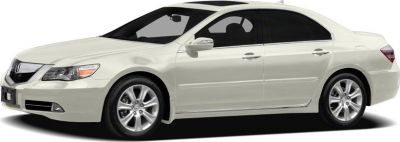
| Production: | 2004-2012 |
|---|---|
| Model Year: | 2005 |
| Length: | 4917-4973 mm193.6-195.8 in |
| Width: | 1847 mm72.7 in |
| Height: | 1455 mm57.3 in |
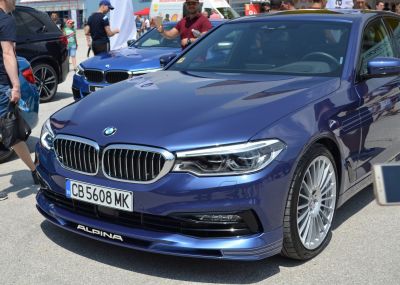
| Production: | 2017-2020 |
|---|---|
| Model Year: | 2017 |
| Length: | 4956 mm195.1 in |
| Width: | 1868 mm73.5 in |
| Height: | 1466 mm57.7 in |
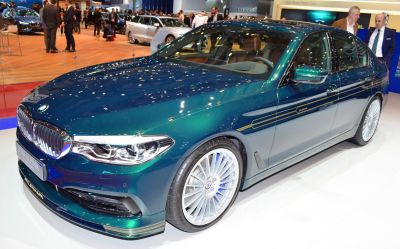
| Production: | 2017-2020 |
|---|---|
| Model Year: | 2017 |
| Length: | 4956 mm195.1 in |
| Width: | 1868 mm73.5 in |
| Height: | 1466 mm57.7 in |
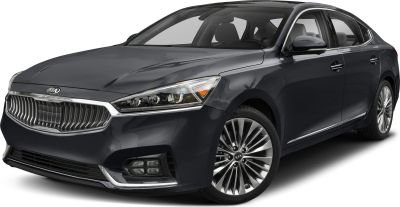
| Production: | 2016-2019 |
|---|---|
| Model Year: | 2017 |
| Length: | 4971 mm195.7 in |
| Width: | 1869 mm73.6 in |
| Height: | 1471 mm57.9 in |
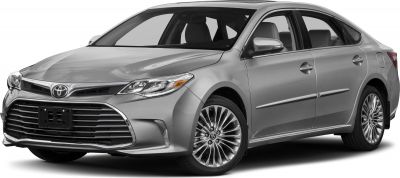
| Production: | 2015-2018 |
|---|---|
| Model Year: | 2016 |
| Length: | 4961 mm195.3 in |
| Width: | 1834 mm72.2 in |
| Height: | 1461 mm57.5 in |

| Production: | 2012-2015 |
|---|---|
| Model Year: | 2013 |
| Length: | 4961 mm195.3 in |
| Width: | 1834 mm72.2 in |
| Height: | 1461 mm57.5 in |
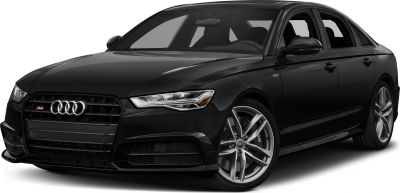
| Model Year: | 2016 |
|---|---|
| Length: | 4931 mm194.1 in |
| Width: | 2086 mm82.1 in |
| Height: | 1430 mm56.3 in |
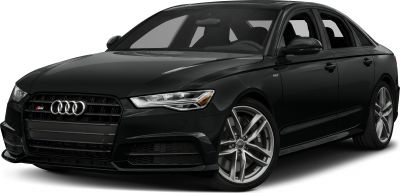
| Production: | 2014-2018 |
|---|---|
| Model Year: | 2014 |
| Length: | 4931 mm194.1 in |
| Width: | 2086 mm82.1 in |
| Height: | 1430 mm56.3 in |
